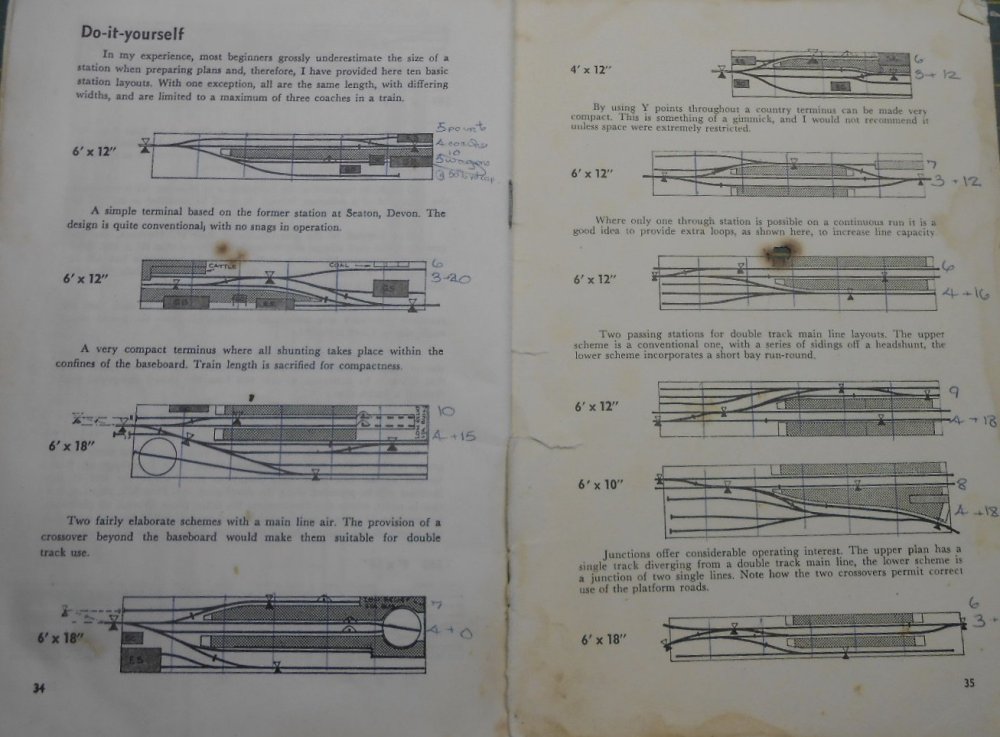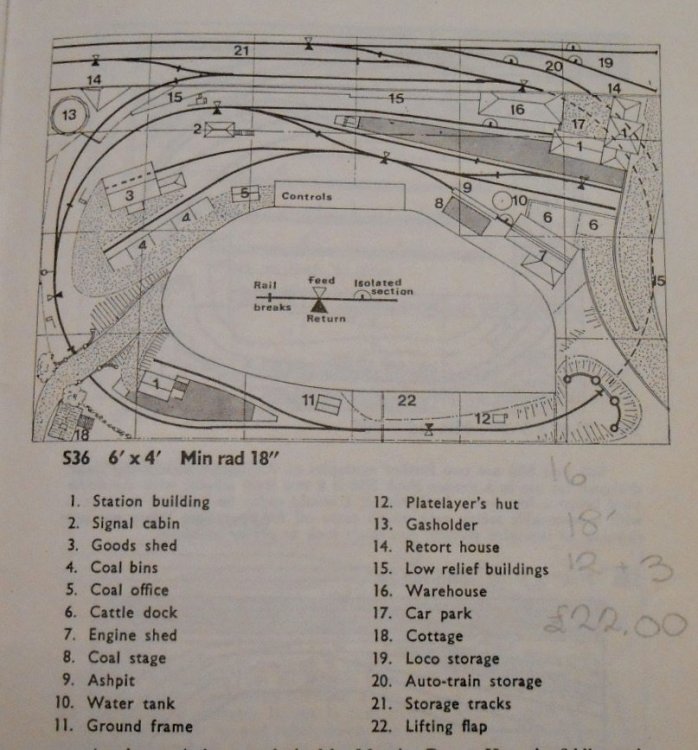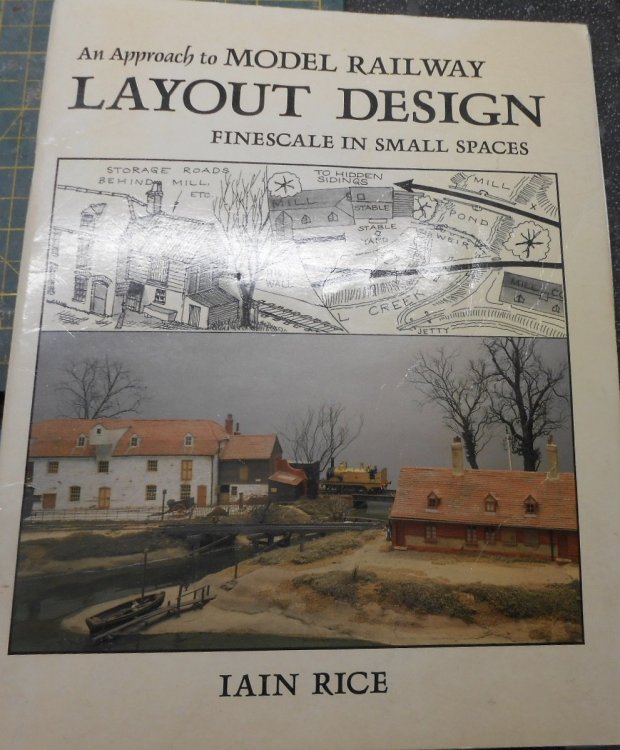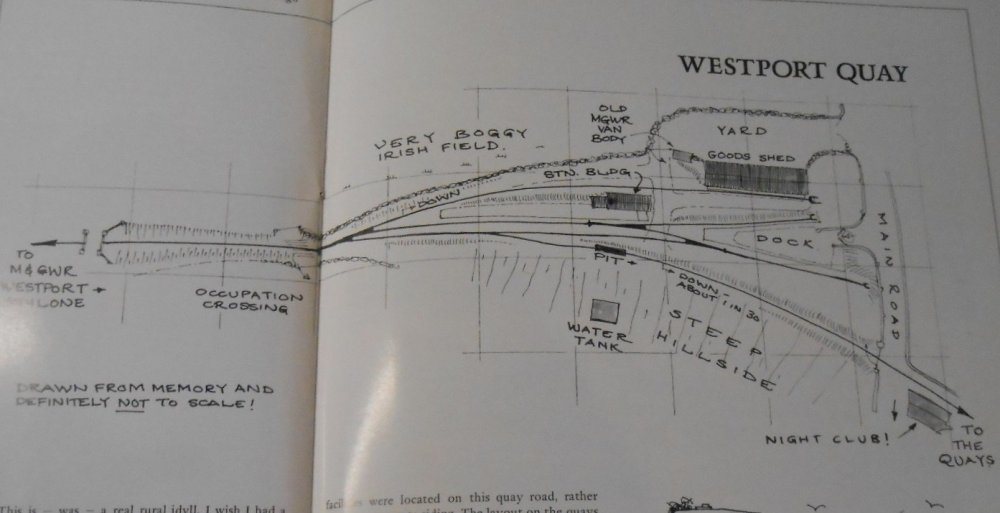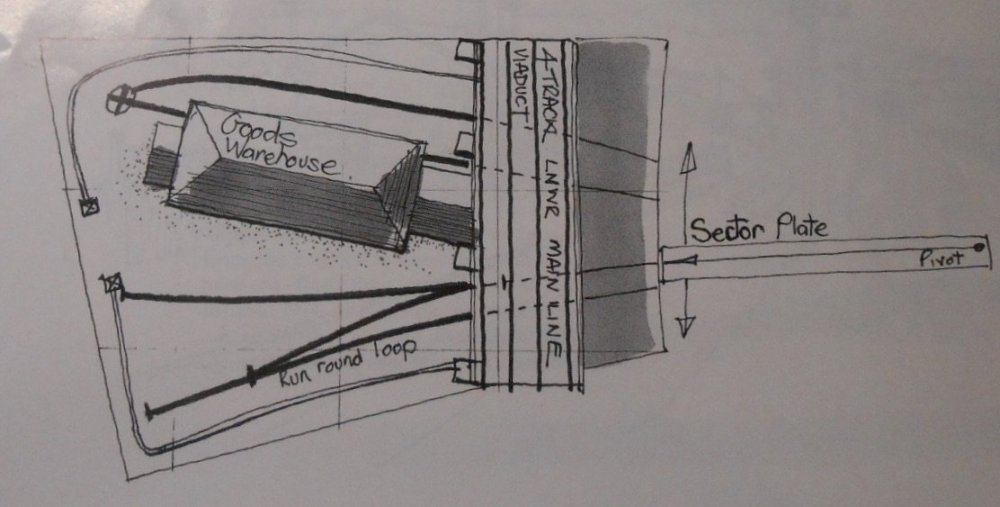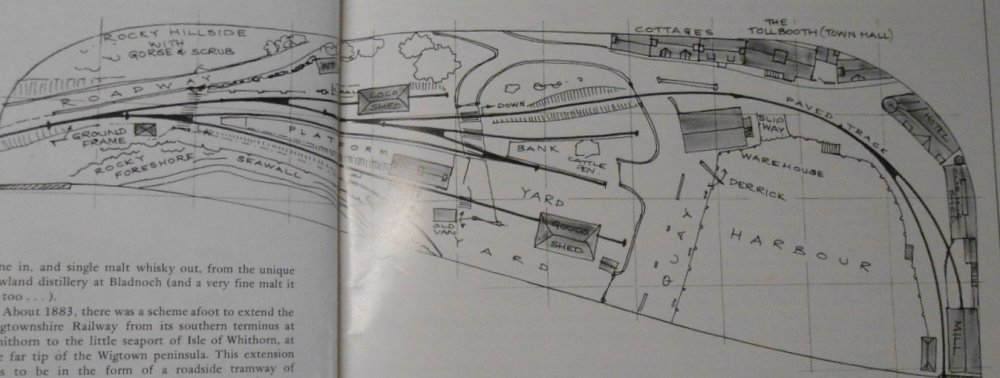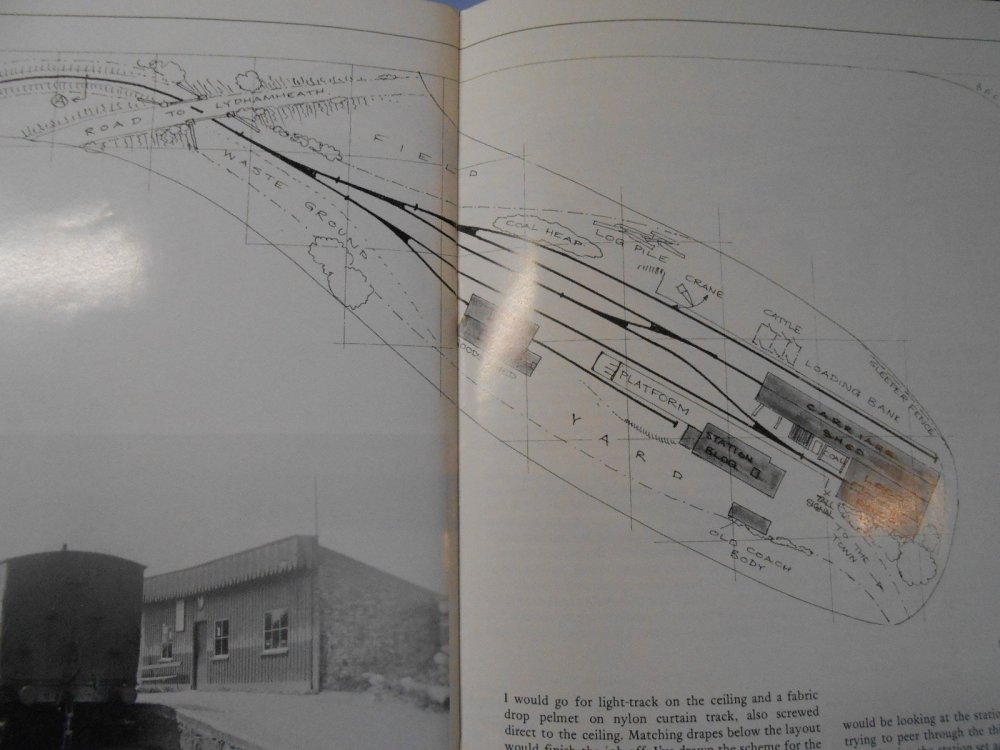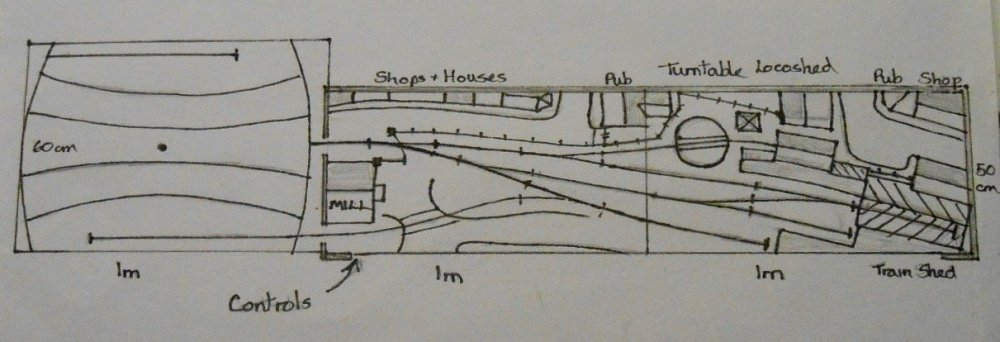
David Holman
Members-
Posts
4,341 -
Joined
-
Last visited
-
Days Won
117
Content Type
Profiles
Forums
Events
Gallery
Blogs
Store
Community Map
Everything posted by David Holman
-
All couplings are a compromise, but Kadee are as close to buckeye type as you could want. They do require careful setting up to work properly on a shunting layout though and while the couplings themselves are really neat, the uncoupling magnets can be intrusive visually. I use pairs of rare earth magnets on Fintonagh, set vertically 5mm apart in the track. This works well in terms of uncoupling, but being only 3mm diameter means a very small area in which they work. Tension locks work, but are horrible to look at - especially on the stunning rtr models we have now. Worst of all though is the sight of those enormous N gauge couplings on the smaller locos - almost half the length of a Terrier or 03 diesel. Thank goodness the 2mm FS folk have decided better alternatives.
-
Looking really smart and going at pace too.
-
Fintonagh was meant to be going out this weekend too, for the Nailsea Show. However have had to cancel because of Covid. Not me, but the friends we were staying with. Next outing therefore will be Expo Narrow Gauge South at Eastleigh on 23rd April.
-
Nice one. Plenty of ideas to play with there, John.
-
Sorry we couldn't oblige, Leslie!
-
Privileged to meet Richard once, at the Manchester Show, the Christmas before he died. We ran his SLNCR Lissadel on my Arigna Town layout (there are photos in the layouts section here if you scroll down far enough) and I am now the proud owner of his WL&W 0-6-0 Shannon as well as a Terry McDermott kit of a 101 class that he never got round to building. Prolific modeller and lovely man. His layout designs very much focussed on the 'less is more' concept, but were also very much about prototype working practice. An internet search of Castle Rackrent will give lots of pictures.
-
Starting to recover from Allypally - it was a great weekend, but shows at large venues are really hard work! AP is a fine venue, with lots of space and height, so it is not as stuffy as many shows, where you often have no idea what the weather is like outside. However, Cultra is very much the best in my experience, not least because of the surroundings... The best part of the weekend was catching up with so many folk we'd not seen over the last couple of years and it was lovely to see a fair few from this forum, plus Mick from Ballyconnel Road too, with pictures of his latest 3mm scale loco. Special mention to Galteemore and his son Tim for all their help on Sunday. Operating a terminus-fiddle yard railway all day demands a lot of care and concentration, especially with just the three of us. There wasn't a great deal of time off compared to Saturday, when there were five operators. Their help was invaluable at the end too. Fintonagh can be dismantled in 5 minutes, but AllyPally, while vast, is a nightmare to get way from, especially as some of the stewards are more than a bit 'jobs worth'. It took me nearly half an hour just to get my car from the car park, then it was a case of carrying the layout and equipment down three flights of stairs. Yes there are two goods lifts, but that would have taken even longer, with all the other stands trying to get out of just three exits. My shopping was limited to just some A1 sheets of plasticard from Eileen's. Like all oil related products though, this stuff is getting ever more expensive. However also got two new books and am already enjoying Rails Through Tipperary. The other is a new one by Giles Flavell on Radio Controlled Models. Giles is well known for his 7mm scale working cranes and lorries, but there is a section on locos too. Whether I'll understand it all, let alone replicate anything is another matter, but you never know...
- 266 replies
-
- 11
-

-
Here are the track plans from the back two pages of the Freezer Booklet '60 Plans for Small Railways'. As you can see, most are 1.8 x 0.3m [6'x1' in old money], though one is about the same length as your proposal. Fairly sure they use Peco 60cm radius points. The short plan uses Y points though - something well worth considering as they are great space savers. Where possible though, it helps running quality to arrange points as a ladder, avoiding that reverse curve which is causing the problems. One thought is to have the turntable accessed from the middle siding, via a diamond over the track to the front siding. However, might be worth considering moving the turntable to form part of the run round loop, as below: There were several examples of this in Ireland, Foynes for one and each end of the Waterford & Tramore another. Harcourt St too, I think. My sketch is one of many attempts to redraw Castle Rackrent, Richard Chown's legendary 7mm broad gauge layout from the 1970s. Putting the turntable here saves a lot of space, because two points and the headhunt will occupy over 60cm of space in 4mm scale, whereas the turntable will only need 30cm at the most. Mine is drawn for 7mm scale, but am sure you can play around with it to suit your own ideas. The two middle points are both Y format. Hope that helps!
-
Splendid! Have relations in Vancouver and on the Island & their houses very much echo what you describe. If only...
-
Love the American walk around concept, but all too often there isn't the space this side of the pond. That said, the Rev Edward Beal once wrote that he didn't think 20x20 feet was particularly large as a layout room - his house had several that size! Something to do with living in a rambling Edwardian or Victorian vicarage no doubt. He had some interesting ideas for the time though - must dig out a few.
-
Certainly is. Super work, Ken.
-
Very much agree, especially as I now have stock to cover two eras, 1900s & 1950s, on my projects. Seems that on both sides of the water, infrastructure didn't change much over the years until more recent modernisation. Over here though a repaint was often the precursor to closure on many branch line stations.
-
Certainly is! Been wondering how things were going, so great to hear some news.
-
I do like a good fitted freight!
-
Fascinating, thanks John. I guess the same sort of thing applies to the peninsula on the east side of Strangford Lough, down to Portaferry, or even to Strangford from Downpatrick on the other side. But then this was Belfast and County Down territory, not the wealthiest, one thinks. Likewise Kilkeel, an obvious extension from Rostrevor. Would make a nice Dundalk, Greenore and Newry model, stocked with LNWR locos and coaches, of course.
-
Fictitious sources of traffic for model railways have included treacle mines and even a factory that produced the holes for toothbrush handles, but seems there is also a large ketchup refinery in Ireland that I didn't know about!
-
I'm afraid not. Was comparing my Irish road atlas with my railway one (the Hajducki version) and wondering about towns like Belmullet and Louisburgh. Like as not, their populations would have been well below 5000 in 1900, though but for the famine and subsequent migration, it might have been a different picture. Comparing maps, it also throws up the question of why certain lines stopped where they did (money and/or geography no doubt). Ardara in particular, for having gone to the trouble of building the line to Glenties, why stop there instead of continuing on the the coast, just a few miles further on? Have long thought it would make a fine Donegal 'might have been'. There are also several isolated mineral railways that, in my world at least, offer the opportunity to outside connections, like the one between Bundoran and Sligo in the West and at Annalong in the east. That said, there are plenty of real places to play with too, of course.
-
Good stuff folks, this is just the sort of thing I was hoping might develop. There are clearly many might have been and adaptations to be explored, but here's an interesting one: What is the largest town in Ireland never to have a railway? And should that be in terms of present day or, say, 1900 population?
-
Could well be this one, from Cyril Freezer's book of small track plans, first published in 1960. My copy dates to 1971 and cost me 17p! It's actually a nice plan, offering plenty of operational potential, though the curves are very tight at just 18" radius. As Cyril said on several occasions, many of his plans would benefit if the was a foot of extra space all round. These days, we'd probably want at least two feet and even then the radius would only be 30".
-
Thought it was - the small hole in the side to access the sandbox filler is the give away - or, like a Midland Jinty, is it really where the key to the clockwork motor goes? Nice bit of scratchbuilding too!
-
Fantastic - thanks for sharing this, Ken. Have been pondering RC on and off for a while, even if only doing a few locos, so that there would always be something to run in a crisis. Has happened to me twice, albeit in over 100 shows - once when a dead short caused a total shutdown for almost and hour and recently when I took Belmullet out and a dodgy controller plug ruined most of the morning on the first day. Getting all the stuff into a 7mm loco ought to be easier than with a small 4mm loco, though am wondering if some of the items need to be bigger, to cope with the larger size/weight? That said,a Mashima 1833 motor gearbox only draws about 0.25 of an amp and my one amp Gaugemaster handheld controller is adequate for all my locos. Definitely something to consider, after all and average exhibition day is about 7 hours, so a mix of conventional and battery power could easily cover that, plus allowing a second/third loco to run without extra wiring. Yes, DCC, does that but have found I just don't get on with it. Fine looking J26 too!
-
And then there is Courtmacsherry, for me t h e perfect branch terminus in all sorts of ways, not least the way the town provides the backscene and the loco shed hides the hole in the sky to the fiddle yard. Quite long though, as Andy's splendid recreation shows, but then a bit of pruning and rename it Port Macsherry and it becomes doable even in 7mm scale, especially given much of the stock to run on it is available from Alphagraphix.
-
Indeed, though if I did the BCR, then I'd probably do Lydham Heath. Minimal, to say the least, but a reversing point, so reasonable activity. 7mm scale, radio controlled battery power, to enable a decent depth of weeds in the track. Plus the iconic Carlisle, of course. Find me an excuse for a similar loco to have run in Ireland and I'd be very tempted to build it in broad gauge. That said, Barry Norman has already done Lydham Heath in S - and very fine it is too.
-
I don't know about anyone else, but I often get inspired to create model track plans, even though I know they will never get built. Almost a case of exorcism, give that time and resources are inevitably finite... Anyway, among several others, Angus's latest posts on layout planning set me thinking that perhaps a dedicated ideas thread might be of interest and hopefully generate a bit of discussion. There are plenty of books on layout planning of course & I've certainly bought a few over the years, but it strikes me that, while on the one hand, Irish track plans are not that dissimilar to British ones, they tend to have their own specific features [like almost every terminus having a turntable], not to say a few peculiarities too. Trains having to reverse out of the terminus being one, as in the case of the Clifden branch out of Galway or the Schull line out of Skibbereen. So, here might be a good place to share some favourites. In additional, there are also factors, as discussed in Angus's thread about what actually works as a design - both from an operational and/or visual point of view. Scale is another, for we all have a finite amount of space to work in, while shunting layouts are probably better suited to medium and larger scales. Also, what you you want from your model railway? Some of us, me included, are more interested in building things [and creating as realistic a scene as possible], than operating, a reason why Iain Rice & Bob Barlow's magnificent Orford Quay has always inspired. Just look at those winter trees, for example. So, to get things rolling, here are a couple of thoughts. Rice's take on Westport Quay has been mentioned recently, so below we have the approximate layout, plus his adaption from his Light Railway's book for a Scottish theme. I really like the little quayside extension's scenic potential and notice how the provision of two sidings there mean you can do some basic shunting in that area. I also like his fishing harbour design, Especially the way the two sidings extend out on to the pier. However, all three designs lack a turntable [ok, Westport Quay didn't have one anyway], but one of many things that can bug me about layout design is where any shunting can end up with the loco and part of the train actually having to go off scene to make it happen. One of the most extreme versions of this is the Barry Norman design below. Very compact and probably really only a diorama, but you would hardly ever see your prized locos on scene. The same could be said for the almost honorary Irish railway, the Bishop's Castle - though few if any Irish lines ever degenerated into the state this line got into. It's a nice track plan and the addition of a turntable would make it very Irish I think, but you do need a decent bit of mainline out of the station to allow all operation to be 'on scene'. Finally, for now, I've thrown in my own Fintonagh track plan, as an example of how you can keep nearly all the action on scene, including a turntable. Note too the siding sneaking off stage left at the front edge. With only two short sidings on scene, this allows for pretty much any sort of additional traffic, without needing to to model that section - a useful dodge I've used many times. Yes, trains are short [just four wagons], but the layout is fully operable and has proven to sustain interest of numerous shows. As an idea, it could easily made larger of course, something that rarely works the other way round. Anyway, hope this starts some worthwhile discussion, as I for one am always interested in new ideas for track plans.
.png.c363cdf5c3fb7955cd92a55eb6dbbae0.png)

